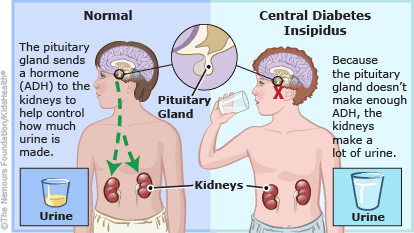A nurse is admitting a client who has status asthmaticus. The client's ABG results are Ph:7.31, Pa02:74mm Hg, PaC02: 56 mmHg and HCO-3: 26mEq/L The nurse should interpret these laboratory values as which of the following imbalances?
Metabolic alkalosis
Respiratory acidosis
Metabolic acidosis
Respiratory alkalosis
The Correct Answer is B
The pH value is less than the normal range of 7.35-7.45, indicating acidosis. The PaCO2 value is elevated above the normal range of 35-45 mmHg, indicating respiratory acidosis. The PaO2 value is lower than normal, but not significantly low enough to indicate hypoxemia. The HCO3- level is within the normal range, but not significantly high enough to indicate metabolic compensation for respiratory acidosis.

Nursing Test Bank
Naxlex Comprehensive Predictor Exams
Related Questions
Correct Answer is B
Explanation
Abdominal discomfort an hour after a meal is a common symptom of a gastric ulcer because the stomach is where food is initially processed, and stomach acid is most concentrated. In contrast, duodenal ulcers typically cause pain 2-3 hours after meals, as food moves out of the stomach and into the duodenum, where it encounters duodenal acid.
A positive stool occult blood test is a non-specific finding that can be caused by many gastrointestinal conditions, including peptic ulcers. It does not indicate the location of the ulcer.
The number of ulcers the client has had in the past does not indicate the location of the current ulcer.
Normal hemoglobin and hematocrit levels do not provide information about the location of the ulcer.


Correct Answer is A
Explanation
Excess fluid volume related to intake greater than output would be the most appropriate nursing diagnosis for a patient with symptoms of DI (diabetes insipidus). This condition results in excessive urine output and, as a consequence, can lead to dehydration and electrolyte imbalances. Therefore, monitoring and managing fluid volume is a priority for patients with DI.
Risk for impaired skin integrity related to generalized edema is more commonly associated with conditions that cause fluid retention such as heart failure, liver failure, or kidney disease, rather than DI.
Activity intolerance related to muscle cramps and weakness is a possible nursing diagnosis for patients with conditions that affect muscle function, such as muscular dystrophy or multiple sclerosis, but not specifically for DI.
Insomnia related to waking at night to void is more commonly associated with urinary frequency or nocturia due to conditions such as urinary tract infections or benign prostatic hyperplasia, but not specifically for DI.

Whether you are a student looking to ace your exams or a practicing nurse seeking to enhance your expertise , our nursing education contents will empower you with the confidence and competence to make a difference in the lives of patients and become a respected leader in the healthcare field.
Visit Naxlex, invest in your future and unlock endless possibilities with our unparalleled nursing education contents today
Report Wrong Answer on the Current Question
Do you disagree with the answer? If yes, what is your expected answer? Explain.
Kindly be descriptive with the issue you are facing.
